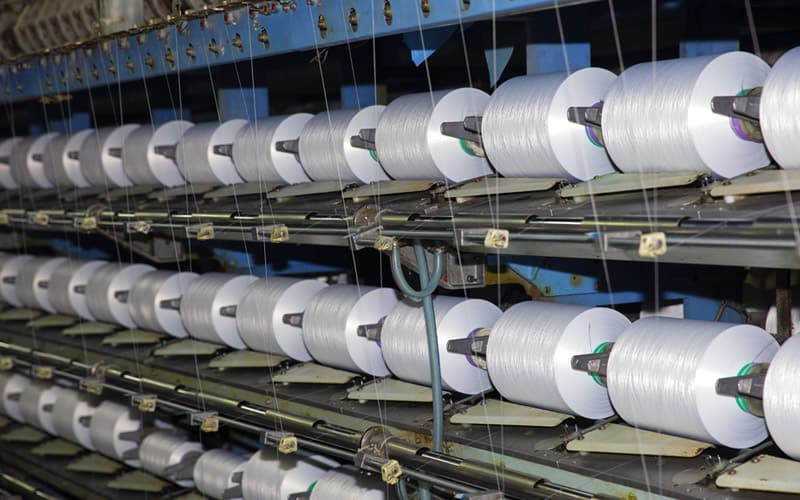Flame retardant materials include organic flame retarda […]

Flame retardant materials include organic flame retardant materials and inorganic flame retardant materials. Current flame retardant materials are materials that can achieve flame retardant effects after adding flame retardants. Generally speaking, there are various types of flame retardants, including organic flame retardants and inorganic flame retardants. Organic flame retardants have good flame retardant effects and relatively few additives. However, organic flame retardants have the disadvantages of large amounts of smoke and release of toxic gases during combustion. Inorganic materials have the advantages of non-toxic, smokeless, non-volatile, and inexpensive, but there are a lot of additives in them.
01 Development status at home and abroad
Flame retardant is a booster for polymer synthetic materials. The flame retardant can be used to flame-retardant polymer materials, so as to avoid material burning and prevent fire from spreading, and promote synthetic materials with smoke suppression, self-extinguishing and flame retardancy .
02Analysis of the advantages and disadvantages of commonly used flame retardants
In recent years, with the increase in the output of plastic products and the improvement of safety standards, flame-retardant materials have become more widely used. Generally speaking, flame-retardant materials can be divided into organic flame-retardant materials and inorganic flame-retardant materials. Among them, organic flame-retardant materials are mainly halogen additives. Inorganic materials not only have a certain flame-retardant effect, but also generate hydrogen chloride and prevent smoke. In addition, inorganic flame-retardant materials are non-toxic, non-corrosive and inexpensive. The consumption of inorganic flame-retardant materials in the United States, Japan and other countries exceeds 60%. However, the consumption of inorganic flame-retardant materials in my country is less than 10%.
2.1 Halogen flame retardant
Halogen-based flame retardants are not only the largest in output, but also the most widely used. The material added with the flame retardant can release hydrogen halide during the combustion process and obtain free radicals, thereby preventing the transmission of the combustion chain, and then generating low-activity free radicals to slow down the combustion. Halogen flame retardants are generally used in thermoplastic materials and thermosetting materials. They are not only compatible with polymer materials, but also easy to use. Therefore, they are welcomed by the market and are widely used in automobiles, packaging, textiles and other industries.
2.2 Phosphorus flame retardant
Inorganic phosphorus flame retardants mainly include phosphate, red phosphorus, etc. Red phosphorus is widely used, which is a good flame retardant, but in practical applications, red phosphorus flame retardant materials are easy to oxidize and release harmful Highly toxic gases and dust generated by combustion can easily lead to explosions. There are certain risks in resin mixing and molding. Therefore, phosphorus-based flame retardant materials are subject to certain restrictions on their use. The improved red phosphorus flame retardant is added with metal hydroxide, which solves the toxicity problem of polymer materials to a certain extent.
2.3 Nitrogen-based flame retardants
Commonly used varieties are melamine, melamine cyanurate (MCA), etc., often need to add synergist, nitrogen/phosphorus is the most commonly used synergistic flame retardant system, mainly used in PA, PU, PO, PET, PS, PVC and other resins .
Melamine cyanurate is a nitrogen-containing halogen-free environmentally friendly flame retardant, especially suitable for PA6 and PA66 without fillers. It has two forms: powder and granules. When the flame-retardant polyamide foam of this product is burned, the formed carbon foam layer protects the polymer and insulates heat and oxygen.
2.4 Metal oxide flame retardant
Metal oxide flame retardants mainly add inorganic elements with intrinsic flame retardancy to the flame-retardant substrate in the form of simple substances or compounds, and are fully mixed with high polymers in a physically dispersed state, and pass through in the gas or condensed phase. Chemical or physical changes play a flame retardant effect.
Aluminum hydroxide is the most popular flame retardant for inorganic hydroxides, and is mainly used for synthetic rubber, thermosetting resins and thermoplastics whose processing temperature is below 200°C. Aluminum hydroxide flame-retardant plastics are less smoky in flames, which is an outstanding advantage.
Magnesium hydroxide is an inorganic flame retardant with better thermal stability. It is still stable above 300°C. It is widely used in many artificial rubbers, resins, including engineering plastics and other resins processed at high temperatures. Plays the role of flame retardant and smoke suppressant in the polymer system. It is used in combination with ATH to complement each other, and its flame retardant effect is better than using it alone.